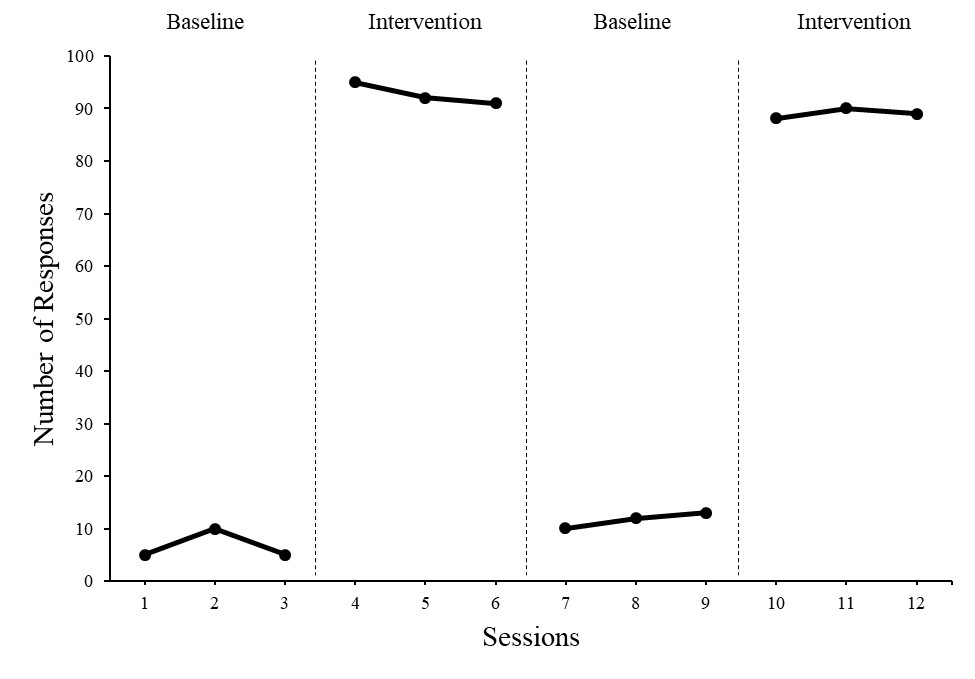Replication Effect Can Be Seen in a Reversal Design in the:
In an ABAB Reversal design, an experimenter rotates two or more weather condition and has a participant consummate several sequent sessions in each condition. Typically, an experimenter rotates baseline and intervention weather. This design is useful for demonstrating functional relations with performance behaviors. To demonstrate command in this pattern, one must observe different levels of behavior in the respective weather condition.
Gyre DOWN TO Learn MORE ABOUT THE DESIGN
Video Educational activity
Demand to know how to set up the educational activity?
More Information almost Reversal Designs
This design is used to demonstrate all aspects of baseline logic (predictability, verification, replication) inside the same participant. The experimenter begins with baseline and continues observing behavior until there is steady land responding, which allows i to predict that the behavior should remain the same if there is no change to the surround. Now, the experimenter can implement the intervention and if behavior changes, assert the consistent – that something other than behavior remaining the same occurred. Once beliefs becomes stable during intervention, the experimenter can repeat a baseline condition. If behavior returns to the aforementioned level as the initial baseline, the experimenter has demonstrated verification of the baseline prediction. That is, the experimenter gathered evidence that the initial prediction was a expert prediction. Last, the experimenter repeats intervention. If beliefs changes again, the experimenter has replicated the change in beliefs (dependent behavior) when changing from baseline to intervention (contained variable).
One should not employ a reversal design with behaviors that are not reversible. For example, if you teach a person to fish, that individual is not likely to forget how to fish, making a reversal design a poor selection for evaluating your line-fishing intervention. Command is demonstrated in this design when behavior returns to baseline levels and when one replicates the intervention effects. If either of these do non occur, once has non demonstrated a functional relation.
Examples
Porterfield, Herbet-Jackson, and Risley (1976) used a reversal design to compare the furnishings of contingent observation to the effects of redirection with preschoolers. The researchers found that redirection produced higher rates of disruption than contingent observation.
Krentz, Miltenberger, and Valbuena (2016) compared baseline and token-reinforcement conditions and effects on distance walking with adults with intellectual disabilities. The researchers found that the participants walked considerably more than laps around a rail when each lab resulted in a token that could be exchanged for a backup reinforcer.
pattersonwaris1961.blogspot.com
Source: https://blogs.cuit.columbia.edu/df2675/graphing-tutorials/graphing-tutorial-basics/windows-pc-excel-graphing-tutorials/pc-abab-reversal-graph/

0 Response to "Replication Effect Can Be Seen in a Reversal Design in the:"
Post a Comment